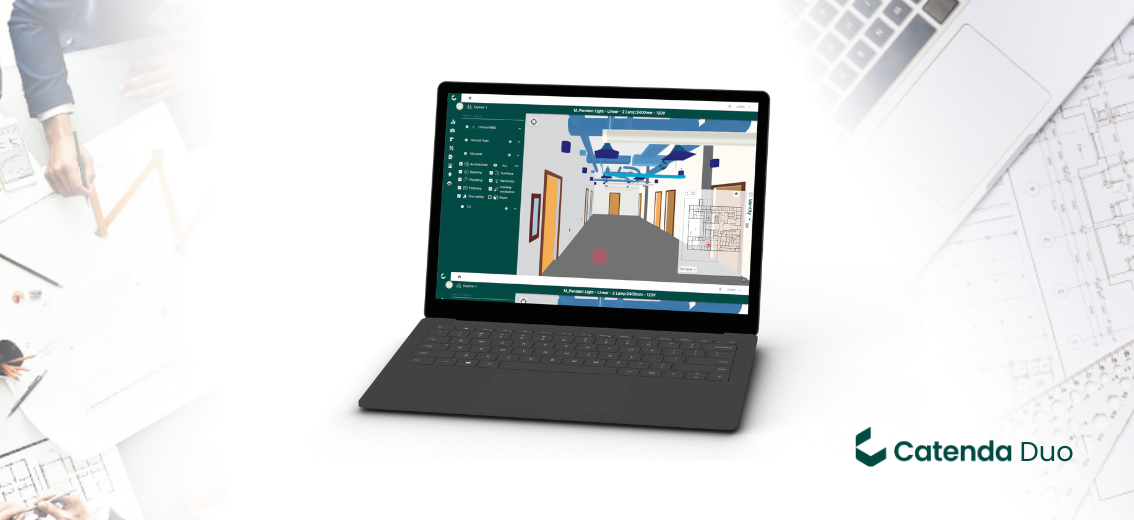In the realm of facility operations, the role of a facilities manager is critical in managing various types of businesses, from retail stores and offices to factories. This role carries broad responsibilities, including construction, maintenance, security systems, and general upkeep. With the rise of digital transformation, data-driven facility operations are emerging as a powerful solution for enhancing efficiency, sustainability, and cost savings. This approach integrates the facilities management function with innovative processes, leading to improved performance in the built environment.
What is currently the biggest challenge facilities managers face when making decisions?
In the world of facility operations and maintenance, the ability to make informed decisions can significantly impact by saving substantial costs, minimizing energy consumption and extending the longevity of a building. However, decision-making in this domain often faces challenges, ranging from budget constraints to resource allocation dilemmas. Making the most of data insights is becoming increasingly essential in navigating these complexities and guiding toward optimal outcomes.
The Power of Data-Driven Decisions in Facilities Management
At its core, data-driven decision-making relies on the availability and analysis of comprehensive datasets. Without access to relevant information, decisions risk being based on incomplete or inaccurate assessments. It’s crucial to gather data not only from maintenance and operational activities but also from user feedback, providing valuable insights into the practical aspects of building usage.
Through comprehensive data collection, facility managers can identify patterns, anticipate potential issues, and develop proactive measures. For instance, by analyzing sensor data on equipment like vibrations and temperatures, facility managers can predict bearing wear in air handling units and schedule replacements before breakdowns.
Moreover, the utilization of Key Performance Indicators (KPIs) can further streamline decision-making processes. These indicators serve as benchmarks that provide a quantifiable measure of performance, ensuring that decisions align with organizational objectives.
In essence, the intelligent use of data fosters an environment of informed, strategic, and efficient decision-making, ultimately contributing to better Facilities Management.
Building a Rich Data Landscape: Beyond Internal Metrics
Here at Catenda, we advocate for a holistic approach to data utilization. Beyond internal operational metrics, integrating feedback from building occupants offers a unique perspective on facility performance. Distinguishing between planned preventive maintenance and unforeseen interventions can refine budgeting strategies, enabling a more nuanced understanding of cost drivers and opportunities for savings.
Furthermore, energy consumption emerges as a critical focus in contemporary facility management. With evolving regulations, such as those outlined in recent European directives, both public and private sectors are under increasing pressure to monitor and disclose energy usage transparently. Compliance requires not only accurate measurement but also proactive measures to align with strict standards.
Unlocking Hidden Potential: Leveraging Data for Strategic Advantages
Data analytics can be a game-changer in facility management, unlocking potentials that otherwise remain hidden. By processing and interpreting large amounts of data, facility managers can gain detailed insights into energy consumption patterns, identifying areas for optimization and efficiency improvements. This proactive approach not only ensures regulatory compliance but also positions organizations to capitalize on cost-saving opportunities and enhance environmental sustainability efforts.
Additionally, integrating data analytics with other digital tools can provide real-time visibility into critical operations, creating a data-rich ecosystem for strategic decision-making. For instance, Internet of Things (IoT) sensors can monitor workspace utilization patterns, providing insights into peak usage times and underutilized areas.
Key factors to consider for leveraging data analytics effectively include:
- Quality over quantity: Focus on the relevance and accuracy of data over sheer volume.
- Integration of data sources: Connect all your data sources for a comprehensive view.
- Analysis and interpretation: Use data analytics tools to decipher patterns, trends, and insights.
Ultimately, effective use of data analytics can lead to improved operational efficiency, reduced costs, and enhanced overall performance, providing a strategic advantage in facility management.
The Future of Facility Management: A Data-Centric Landscape
The transition towards data-driven decision-making represents a significant shift in asset management, empowering stakeholders to navigate challenges effectively and capitalize on emerging opportunities. At Catenda, we’re committed to facilitating this transition, equipping organizations with the tools and insights needed to thrive in an increasingly data-centric landscape.
In conclusion, as the complexities of facility operations and maintenance continue to evolve, embracing data-driven decision-making emerges as a crucial aspect of success. By leveraging the power of data analytics, organizations can unlock new avenues for efficiency, sustainability, and cost-effectiveness, ultimately fostering a more resilient built environment for future generations.
Catenda Duo: A platform that gathers all building data for optimized decision-making
Catenda Duo serves as a comprehensive solution for data gathering and analysis in facilities management. This platform integrates all relevant building data, allowing for a more informed and effective decision-making process.
One of the distinguishing features of Catenda Duo is its role as a true digital twin for managing building operations. This involves creating an interface to manage building resources like lighting, heating, and IoT devices.

By centralizing all building data, Catenda Duo provides a seamless way to track and optimize building performance. This includes monitoring energy consumption, managing maintenance schedules, and even enabling real-time visibility into critical operations.
In addition, facility managers can leverage Catenda Duo’s data analysis capabilities to identify patterns and predict potential issues. This empowers them to make strategic decisions, ultimately reducing operational costs and improving building longevity.
Key features of Catenda Duo include:
- Comprehensive data integration
- Real-time tracking of building operations
- Predictive analytics for proactive decision-making
- Streamlined interface for managing building resources
- Seamless integration with other digital tools and IoT devices.
By providing such a robust platform, Catenda Duo enables organizations to fully embrace the benefits of data-driven decision-making in facilities management.
At Catenda, we’re here to guide you in leveraging the power of technology to help you establish a system perfectly tailored to your specific needs. Ready to maximize the value of your commercial real estate properties? Contact our Catenda Duo experts today to discuss your unique requirements.




